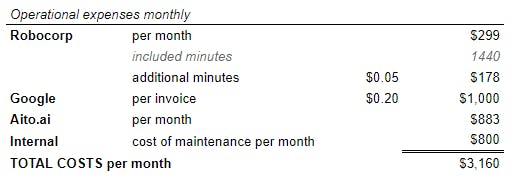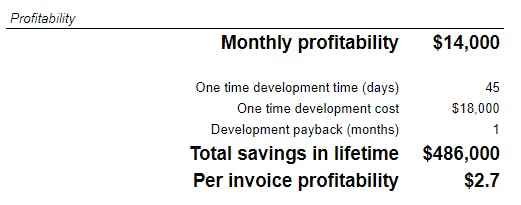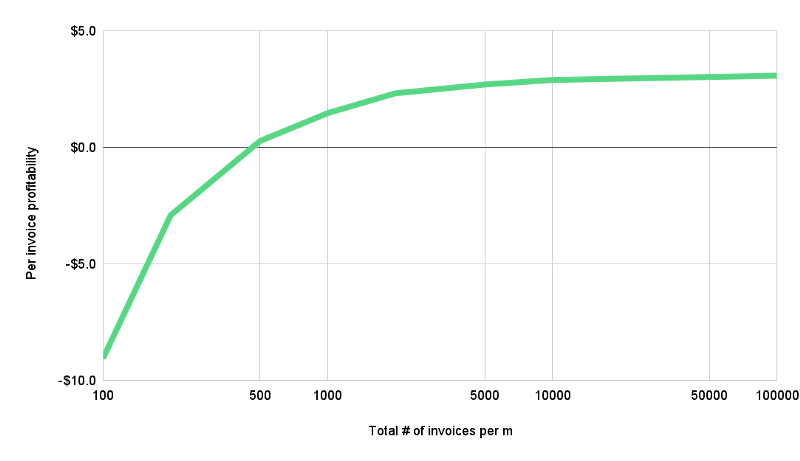Intelligent automation, a business case calculation
Intelligent automation is on the rise, a practical example of the cost and benefit of such an opportunity can help to explain why! Rather than traditional RPA workflows that are rule-based, intelligent automation adds machine learning “brains” to the working “hands” of automation, ultimately adding some intricacies to the implementation.

We at Aito created and evaluated a typical use case that consists of automating purchase invoices to the ERP or accounting system. In practice, things might be a bit more complex than this simple overview, but let’s use this as foundation for the limitless possibilities.
You can read ALL the details here.You can read ALL the details here.
A “body” of work
The options to create an intelligent automation are plentiful, mixing and matching can make your own head spin, but a perfect analogy is if one were to consider themselves in the position of mad scientists Dr. Victor Frankenstein (Frankenstein) or Dr. Frank-N-Furter (The Rocky Horror Picture Show). Your connected body parts in this specific case will include a set of “eyes” to visualize the data from your invoices, a “brain” to analyze the data and in this case handle predictions, finally a set of automation “hands” to physically move the data and take action.
All told however, your final product shouldn’t be a dysmorphic green monster like Victor’s Frankenstein, rather a perfectly crafted specimen like Frank-N-Furter’s Rocky Horror.
Not getting the science fiction references? The point made is that choosing a complementary technology stack is key. With the following body parts, your intelligent automation will be far from an ugly monster. Your “eyes” in our example will be Google Procurement Document AI, the “brain” is Aito, and “hands” of automation are Robocorp.
The reason why they are so pretty together as one, is the elegance of being both Python and cloud-native. Especially in the case of the relationship between Aito and Robocorp, where their shared Python foundation requires barely even a stitch of development to connect the two technologies.
Additionally, as you’ll note in the calculations below, it’s not only the tech that needs to be modern – it’s the pricing model. There is no better cut and dry way to measure ROI and also predictably scale than tech that is consumption-based and doesn’t require upfront investment like Robocorp. That is before you even factor in the savings found with the sustainable flexibility of their open-source automation platform.
Getting your money’s worth
In the example that we created, again you’ll have to read the original post for our assumptions, but the big headline(!!) is that based on the need to process 5000 invoices per month an organization could likely see a 5x return on their investment each month!
What you could expect to put in… What you could expect to put in…

What you could expect to get out…What you could expect to get out…

And the bottom line over three years…And the bottom line over three years…

Aside from this individual measurement and analysis, one might ask, at my scale – is it worth automating? We did the math for you in this case and found a profitability threshold of 500 invoices per month.

Seeing is believing
Not one for math and charts – fair enough if after all you just want to see it in action.
So here is a video, the sample code, and the instructions you need to try it yourself for free!

About Aito
We are on a mission to help everyone solve the world’s problems – big or small – with machine learning. We are equipping the RPA and automation developers and no-coders with easy-to-use ML tools, at a price-point that makes the cost of prediction insignificant.
